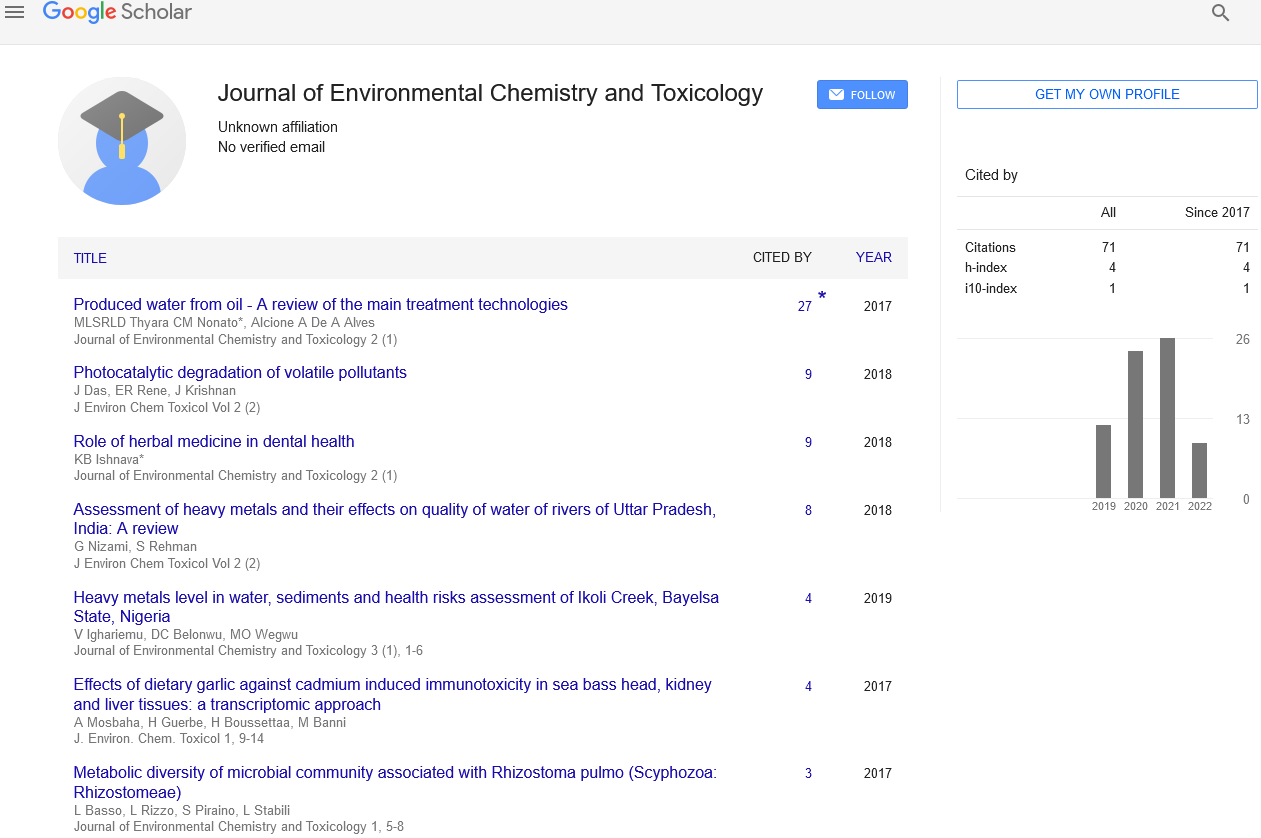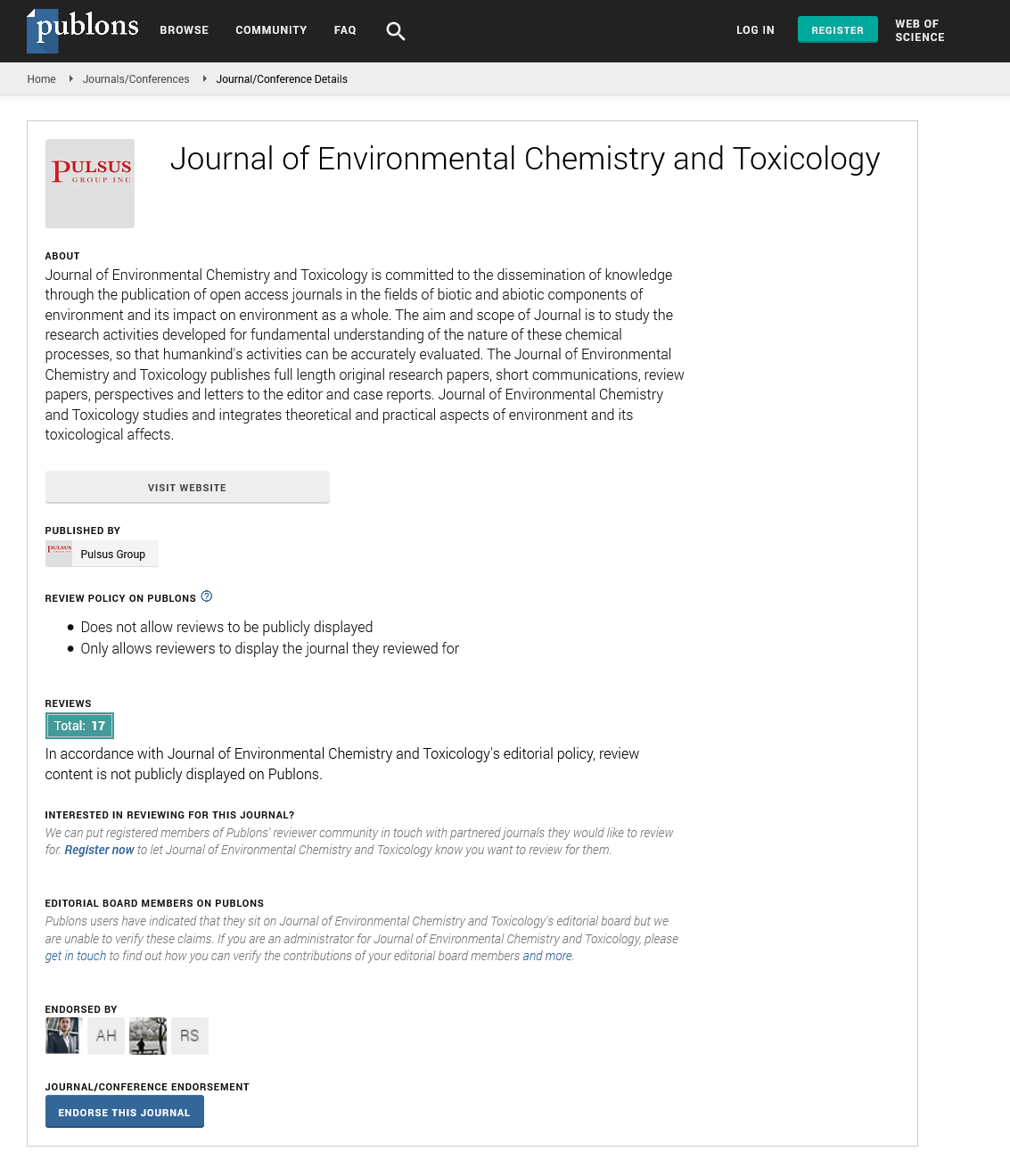Bio-dispersants: Do they have a future to combat marine oil spills?
Received: 27-Sep-2017 Accepted Date: Oct 04, 2017; Published: 12-Oct-2017
Citation: Gutierrez T. Bio-dispersants: Do they have a future to combat marine oil spills? J Mar Microbiol. 2017;1(1):9-10.
This open-access article is distributed under the terms of the Creative Commons Attribution Non-Commercial License (CC BY-NC) (http://creativecommons.org/licenses/by-nc/4.0/), which permits reuse, distribution and reproduction of the article, provided that the original work is properly cited and the reuse is restricted to noncommercial purposes. For commercial reuse, contact reprints@pulsus.com
The Deepwater Horizon (DWH) disaster, which occurred on April 20th of 2010, is heralded as the largest oil spill in U.S. history, and one of the largest maritime spills on record for the Oil and Gas industry. An estimated 700,000 tonnes (4.9 million barrels) of crude oil was released into the Gulf of Mexico over a period of almost 3 months. Due to the magnitude of the spill, its duration, and the unprecedented response by combat teams, this disaster stands as the costliest oil spill in U.S. history, and resulted in environmental, social, and economic turmoil. Rarely has a human-made disaster ever stopped the clock on the research programmes of so many scientists in a nation, with scientists from universities and governmentfunded agencies all over the United States and in other countries placing a hold on their research programmes to turn their attention to the DWH spill. A recent survey analysing world-wide interest in research on marine oil spills reported that following the DWH oil spill, there has been an enormous shift in research focusing on the Gulf of Mexico – from 2% of studies in 2004-2008 to 61% in 2014-2015, and the spill appears likely responsible for doubling the proportion of studies that consider dispersants [1]. Research on the spill continues today and will for many years to come, one of which relates to the use of dispersants to treat oil spills.
At the direction of the Federal On-Scene Coordinator, responders to the DWH spill commenced spraying dispersants on sea surface oil slicks by April 22 (within 48 hours of the blowout), and on May 10 the EPA adopted a testing protocol created by NOAA and BP scientists for subsea dispersant use. Unprecedented quantities, up to seven million liters, of the dispersant Corexit EC9500A was applied by spraying on sea surface oil slicks and subsequently directly injected at the leaky wellhead near the seafloor [2], this was after the dispersant Corexit 9527 was used initially. This subsurface injection of Corexit resulted in droplet size distributions of approximately 10 μm to 30 μm in diameter in the deepwater oil plume, which significantly facilitated biodegradation [3]. However, some studies showed that the use of Corexit inhibited the enrichment of some oil-degrading bacteria [4,5]. This inhibitory effect could be due to a chemical component(s) of the Corexit formulation, an increase in the soluble concentration of toxic hydrocarbon compounds due to the presence of the dispersant, and/or competition by other oil-degrading bacteria that are more resilient in the presence of the dispersant. More research is needed to better understand the effects of dispersants on the microbial response and the overall biodegradation of the oil, and especially under in situ conditions. Many hard lessons have been learned from the DWH spill, one of which has spurred interest to search for alternative types of dispersants that have greater environmental compatibility.
The toxicity of dispersants to marine life has come a long way since the first studies back in the 1960s [6], but their use does not fail to raise controversy and debate, even today. The dispersants that are approved and stockpiled for use in the event of an oil spill at sea are manufactured by organo-chemical synthesis. They are often used in large quantities during a spill, raising concern over their potential toxicology to marine life, even synergistically with the oil. Some toxicologists have questioned the reliability and comparability of the testing methods used by manufacturers, and moreover the testing used is limited to acute (short-term) toxicity studies on one fish species and one shrimp species and does not account for possible persistence of the dispersant in the environment and its long-term effects. This is an area that needs more attention if dispersants are to gain confidence from the scientific community and wider public for their use. More studies need to be done and methods revised that test a wider spectrum of marine organisms under standardized methods to evaluate the potential toxicology of dispersants.
The application of dispersants to treat oil spills is largely based on convenience and cost, and Corexit has become the most used dispersant worldwide, having been used in more than half of the major oil spills since the 1990s [7]. Since the DWH oil spill, there has been growing concern regarding the health and environmental hazards associated with the use of chemical dispersants. This has led to interest in the development of biologicallyderived (bio-based) dispersants – i.e. bio-dispersants. Through the Gulf of Mexico Research Initiative (GoMRI) in the U.S., a number of projects are now underway with the aim to develop bio-dispersants, such that comprise food-grade ingredients that are common additives in food and medicine and that can be obtained relatively cheaply by the tonne. Lecithin in combination with Tween 80, which are both food-grade emulsifiers, have been shown to disperse and produce more stable emulsions of crude oil than Corexit [8]. The development of bio-based dispersants using microorganisms could also be a major step forward to implementing a more environmentally compatible dispersant product for combatting oil spills. Some microorganisms produce surfactants (i.e. bio-surfactants), which are the main dispersing agent in dispersant formulations. To realize this, however, a number of significant limitations need to be overcome, which include lowering the costs associated with the production of bio-surfactants from microorganisms, and increasing bio-surfactant yields, such as through genetic engineering of hyper-producing strains. Research on well-known bio-surfactant-producing microorganisms appears to have reached a peak, so the discovery of new bio-surfactantproducing microorganisms is an avenue that could be explored, particularly from underexploited or extreme environments. Furthermore, there are a number of other obstacles to overcome before a new bio-dispersant candidate reaches approval and that can be stockpiled, many of which relate to testing and approval by the Oil & Gas industry and international oil spill response authorities, like OSRL (Oil Spill Response Limited). For a new biodispersant agent to reach actual application, this effort will ultimately require a close engagement between the Oil & Gas industry and academic research groups working on this.
It may be many years before the first bio-dispersant becomes approved and become part of the stockpiled inventory of dispersant agents that stand at the ready for use in the event of an oil spill. The recent emergence of heightened research on this front seems to hold promise for making this a reality sooner rather than later. Whilst prevention of oil spills in the first place helps reduce the overall volume of dispersants released into the marine environment, more reliance on bio-based alternatives should help reduce the potential detrimental environmental impacts when used during a spill compared to when chemical dispersants are used. In particular, it will be important to select dispersants that speed up the rate and extent that spilled oil is biodegraded by oil-degrading populations of microorganisms. To this end, funding and collaborations between the Oil & Gas industry and academic researchers, both domestic and internationally, needs to be expanded. There will be many challenges along the way, but to reach a successful end to this journey there will need to be a requirement for close engagement, and a building of trust, between academics and the industry.
REFERENCES
- Murphy D, Gemmell B, Vaccari L, et al. An in-depth survey of the oil spill literature since 1968: Long term trends and changes since Deepwater Horizon. Marine Pollution Bulletin. 2016;113:371-9.
- Hamdan LJ, Fulmer PA. Effects of COREXIT EC9500A on bacteria from a beach oiled by the Deepwater Horizon spill. Aquatic Microbial Ecology. 2011;63:101-9.
- Brakstad OG, Nordtug T, Throne-Holst M. Biodegradation of dispersed Macondo oil in seawater at low temperature and different oil droplet sizes. Marine Pollution Bulletin. 2015;93:144-52.
- Rahsepar S, Smit MPJ, Murk A, et al. Chemical dispersants: Oil biodegradation friend or foe? Marine Pollution Bulletin. 2016;108:113-9.
- Kleindienst S, Seidel M, Ziervogel K, et al. Chemical dispersants can suppress the activity of natural oil-degrading microorganisms. Proceedings of the National Academy of Sciences. 2015;112:14900-05.
- Portmann JE, O’Connor PM. The toxicity of several oil-spill removers to some species of fish and shellfish. Marine Biology. 1968;1:322-9.
- Lessard RR, Demarco G. The significance of oil spill dispersants. Spill Science & Technology Bulletin. 2000;6:59-68.
- Athas JC, Jun K, McCafferty C, et al. An effective dispersant for oil spills based on food-grade amphiphiles. Langmuir. 2014;30:9285-94.






